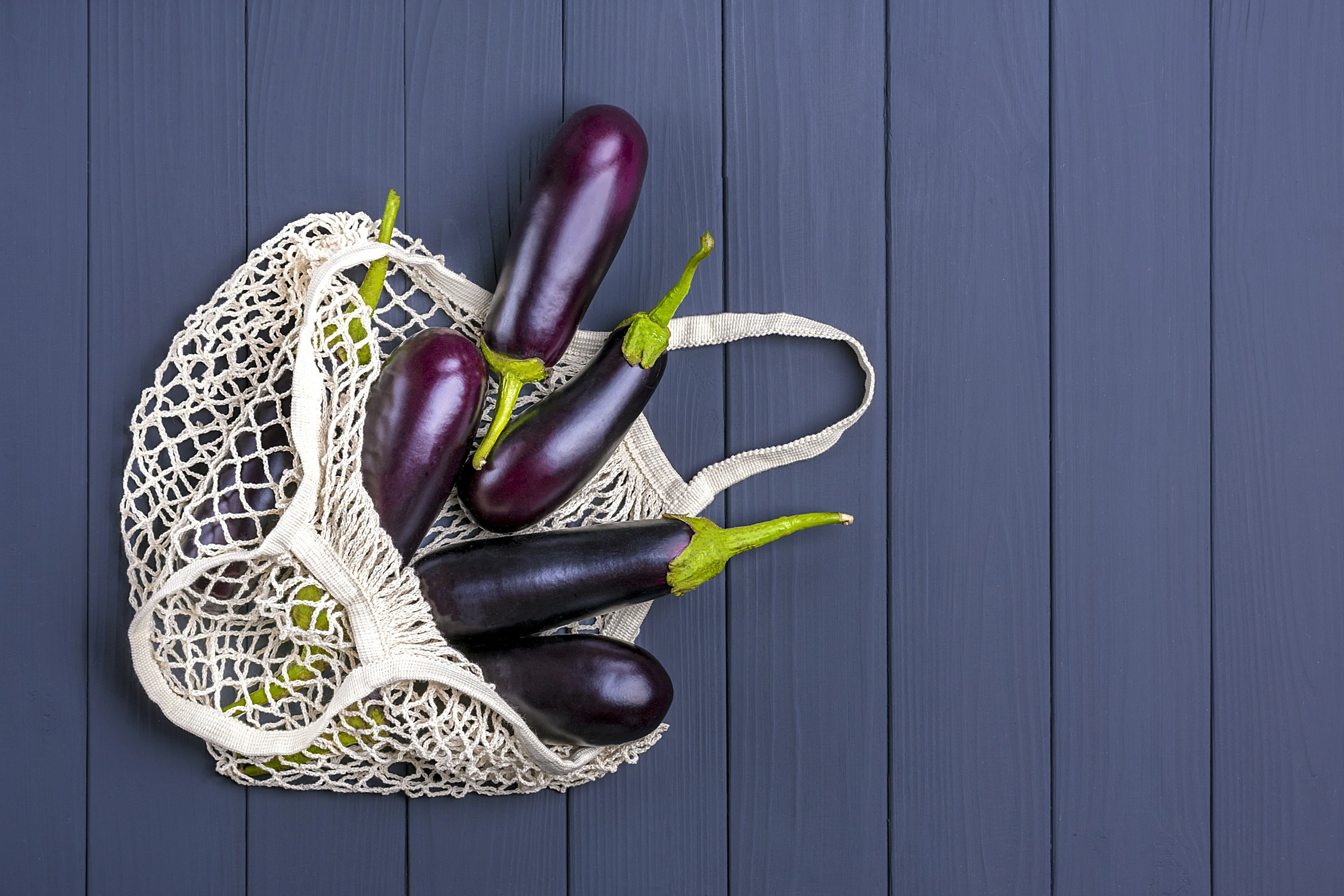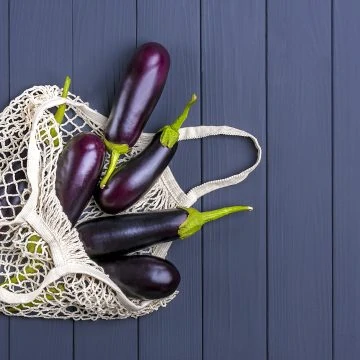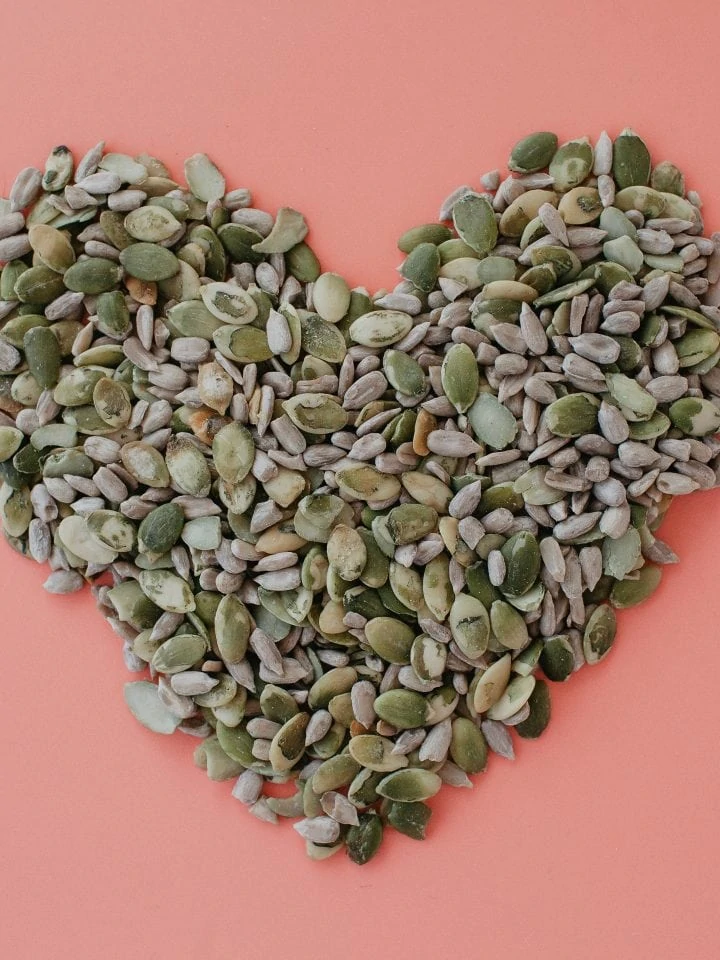We have previously explored different cuisines from all over the world in our food guide series. In this installment, we have gathered the most popular foods that start with the letter E. For those out there who are always eager to learn new things about different cultures and cuisines, we are pretty sure that you will find something new and interesting here.
Jump to:
Foods that start with the letter E

1. Eggplant
This vegetable from Asia was first cultivated in India around 3000 BC. It's often referred to as aubergine because it looks similar to an egg-shaped tomato. Its flesh is purple when unripe, but turns green once cooked. The skin is thin and tough, so you might want to consider peeling them for an easier cooking experience. They're also very fibrous, which makes them perfect for soup stocks. Eggplants also come in a variety of sizes and shapes. Different types of eggplants include longi, kipfler, white globe, and Japanese types.
2. Edamame
These soybeans come from Japan, where they were originally grown by farmers during harvest time. Today, edamame is available year-round at Asian grocery stores and health-food shops. These tasty morsels look like lima beans, but taste more like corn since they contain no fiber. In addition to being deliciously eaten alone, they pair well with rice, salads, pasta, and soups.
3. Eclairs
As perhaps the most popular dessert when it comes to foods that start with E, eclairs are a delight. A French delicacy made with puff pastry, cream cheese, sugar, and chocolate, this classic treat originates from Lyon, France. Traditionally baked in molds, modern versions are prepared freehand. This confection is typically served warm after dinner along with coffee or tea.
4. Edam
Edam is a fermented food made from milk and cheese. It is a traditional food of the Netherlands and has been a part of Dutch cuisine for centuries. Edam is typically made from a mixture of milk and cheese that has been left to ferment, which gives the food its characteristic flavor and texture. Edam cheese has a mild flavor that can be considered sweet. It goes great as a cheese topping and in sandwiches. You can have edam as the main dish, or you can opt for using it as an ingredient when cooking.
5. Eel
The eel is a type of fish that is found around the world in both salt and freshwater. It has a long body, with a large mouth with rows of sharp teeth. Once caught, they're cleaned and sold alive or frozen as filets. When it is cooked, it becomes tender and flaky like chicken breast or pork loin. Eel also has a mild flavor that goes well with many different sauces and seasonings. Make sure you wash it under cool running water, remove the head and tail, boil lightly for thirty minutes, slice lengthwise, and serve chilled.
6. Emblic
Also known as the Swiss cake roll, emblic cake is a traditional Belgian Christmas cake filled with whipped cream and topped with icing sugar. Typically baked within a day of purchase, this light sponge cake contains two parts egg whites and three parts yolks. The secret ingredient is emmer (farina), a type of semolina flour produced from ground durra wheat. While it's mostly consumed during holidays, it's easy to find it year-round at specialty markets.
7. Endive
Endive is chicory lettuce that grows underground. Considered bitter-tasting, it tastes better when paired with stronger flavoring ingredients. Commonly used with a salad dressing, endive leaves can range anywhere from thick and hearty to thinner and delicate.
8. Eggnog
This holiday drink has been around since at least 1825, when it was invented in England. An egg-based dairy product, the original recipe for eggnog was made from milk, eggs, sugar, rum, and nutmeg. Today, most people consider eggnog as a traditional drink for winter holidays.
9. Egg fruit
The egg fruit is a tropical tree that grows in warm climates. It is related to the two other egg fruits, the lychee and the longan. The tree produces a round fruit that is about the size of your palm. A smooth-skinned fruit, it has a white flesh. The taste of the egg fruit is often compared to that of custard or pudding. The egg fruit is a popular ingredient in many tropical dishes. It is also sometimes used as a natural dye.
10. Escarole
Also known as cole lettuce, escarole is a leafy green vegetable that is known primarily for its large head. Its leaves are long and thin, often pointed at one end and rounded at the other. While they taste similar to Swiss chard, escarole contains more calcium and vitamin C than spinach, as a bonus.
11. Entawak
Originating from Southeast Asia, the entawak is a tropical fruit, with a sweet, juicy flesh and orange color. The entawak fruit is a popular food choice in Southeast Asia and is often used in traditional dishes. The fruit is a good source of vitamins and minerals, and is also high in fiber. It is also a good source of antioxidants that will help to protect the body against disease.
12. Elderberries
These tiny purple berries grow on shrubs native to Europe and Asia. Their flavor resembles blueberries, and elderberries contain high concentrations of antioxidants including flavonoids, anthocyanin pigments, and proanthocyanidins. These compounds protect against heart disease, cancer, and diabetes. Elderberries' deep purple color comes from these antioxidants and makes them look very attractive atop desserts. Although not much larger than a grain of rice, elderberries pack a powerful punch thanks to their rich concentration of polyphenols.
13. Emmentaler cheese
Emmentaler is a semi-hard and aged cheese produced in Switzerland. Emmentaler cheese is known for being hard enough to last for months without refrigeration. It takes about two years for a wheel of Emmentaler to reach maturity. After ripening, wheels are washed several times with water, brushed clean, wrapped tightly in cloth, and placed in humid caves. Different regions produce different varieties of Emmentaler, based on their own methods and tradition.
14. Empanadas
A Spanish word meaning "little bread pockets”, empanadas are small turnovers usually served warm straight out of the oven. Traditionally baked in greased pans, now can be found frozen in grocery stores year-round. Made mostly with potatoes, beef, or chicken, empanada filling options include mashed beans, grated vegetables, olives, and pickled jalapeños. There are also vegetarian versions available.
15. Elk
Elk meat is a nutritious and delicious food, especially if you are on the look for an alternative to beef. Elk are a type of deer that are native to North America and Europe. Their meat is leaner than beef and has a flavor that is similar to venison. Elk meat is a good source of protein, iron, and other nutrients, making it a healthy option for those who are looking to improve their diet.
16. Erbazzone
Erbazzone is a traditional Italian dish from the Piedmont region. It is made with Swiss chard, onions, Pancetta, Parmesan cheese, and eggs. The Swiss chard is cooked in the Pancetta fat, then the onions and Parmesan are added and cooked until the onions are soft. Finally, the eggs are beaten and added to the mixture, cooking until they are set.
17. Entrecôte
Entrecôte is a type of steak that is taken from the middle of the ribeye. It is a boneless cut of meat that is usually served with the bone attached. The entrecôte is a very popular cut of meat in France, and is often considered to be one of the best cuts of beef. It is a very tender cut of meat that is full of flavor.
18. Escargot
Although you might not be familiar with this one, escargot, or the French snail, remains one of the most popular dishes in its homeland. The dish is usually served as an appetizer. It is also important to choose fresh, plump snails for the dish, as they will be more tender and flavorful. When cooked correctly, escargot can be a delicious and unique dish that you'll want to try again and again.
19. Enchiladas
In Mexico, enchiladas are small folded tortillas filled with various ingredients. It generally features pork, chicken, cheese, beans, chilies, and more. Enchiladas are usually served as part of a larger meal such as tamales or tacos al pastor. Try to have yours with salsa verde instead of crema. Don’t forget to enjoy it with hot sauce.
20. Escabeche
Escabeche is a dish that is typically made with fish or chicken. The food is cooked in a vinegar and spice mixture, which gives it a tangy and flavorful taste. Escabeche is a popular dish in many Latin countries, and it can be served as a main course or as a side dish. If you're looking to try something new, then why not give escabeche a try?
21. Escalop
A delicate veal escalope topped with herbs and melted into a rich broth makes a great starter for special occasions. To prepare, season filets lightly with salt and pepper and dredge each piece individually in flour seasoned with ground nutmeg, paprika, and coriander. Heat olive oil in a skillet over medium temperature, then add meatballs gently to brown both sides. Once finished, place onto a serving platter and garnish with lemon wedges and green onions.
22. Ensaimada
Ensaimada is a pastry made with a type of dough that is similar to brioche, and is typically filled with either fruit or cream. The dough is then rolled into a spiral shape and baked until it is golden brown. The ensaimada is a classic example of Spanish cuisine and is enjoyed by many people all over the world. If you happen to be in Spain, try this delicious pastry.
23. Ecrevisse
Ecrevisse is a freshwater crayfish that is native to North America. It is a popular food source in many parts of the world, as its meat can blend in well with most of the popular ingredients. Ecrevisse is also known for its large size and for its distinctive flavor.
24. Etouffee
Etouffee is a French dish that typically consists of seafood or vegetables in a thick sauce. The word "etouffee" comes from the French verb "etouffer", which means "to suffocate" or "to smother." This dish is usually served over rice, but it can also be made with chicken, crawfish, or even vegetarian ingredients.
25. Estragon
Estragon is a type of plant that belongs to French cuisine. While the root itself is quite edible, the leaves of the plant can be utilized as an herb. The plant belongs to the carrot family and is native to Europe and Asia. Estragon has a pungent, slightly bitter taste, and is often used to flavor soups, sauces, among others.
26. Emu
Emu apples are a type of fruit that is native to Australia. They are small, round, and have red or yellow skin. The flesh of the fruit is white and has a sweet taste. Emu apples are typically eaten fresh, but can also be made into jams, pies, and other desserts.
Summary
We are pretty sure that our list of foods that start with E offers a delight for everyone’s taste. From the Spanish pastries ensaimada and empanadas to French escargot, to Japanese bean edamame, feel free to try and add some of these foods to your diet. If you are a meat lover, you can also give elk and entrecôte a try. Enjoy!

Foods That Start With E: Fruits, Recipes, and More!
Equipment
- Choose a unique recipe you never heard of.
- Give it a try!
- Let us know in the comments how you liked it.
Ingredients
- Eggplant
- Edamame
- Eclairs
- Edam
- Eel
- Emblic
- Endive
- Eggnog
- Egg fruit
- Escarole
- Entawak
- Elderberries
- Emmentaler cheese
- Empanadas
- Elk
- Erbazzone
- Entrecôte
- Escargot
- Enchiladas
- Escabeche
- Escalop
- Ensaimada
- Ecrevisse
- Etouffee
- Estragon
- Emu

A writer passionate about wellness, nutrition, and intentional living. She creates engaging, research-based content that empowers readers to live healthier lives. Through every article, she brings clarity, inspiration, and a touch of everyday practicality. Read more about Juliana.







Comments
No Comments